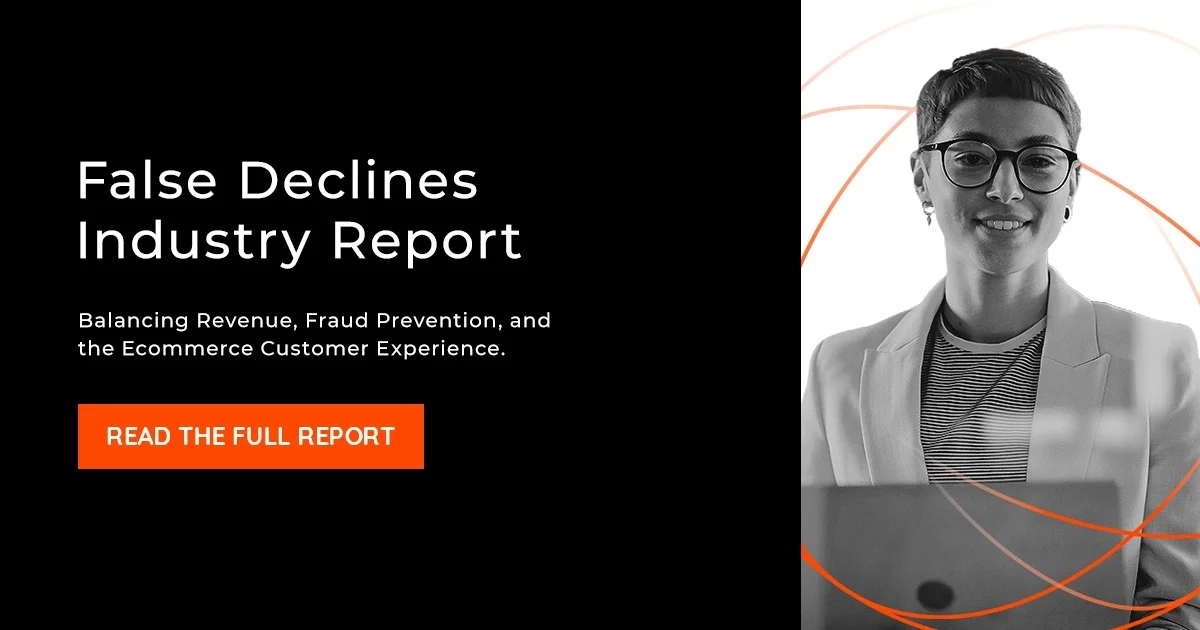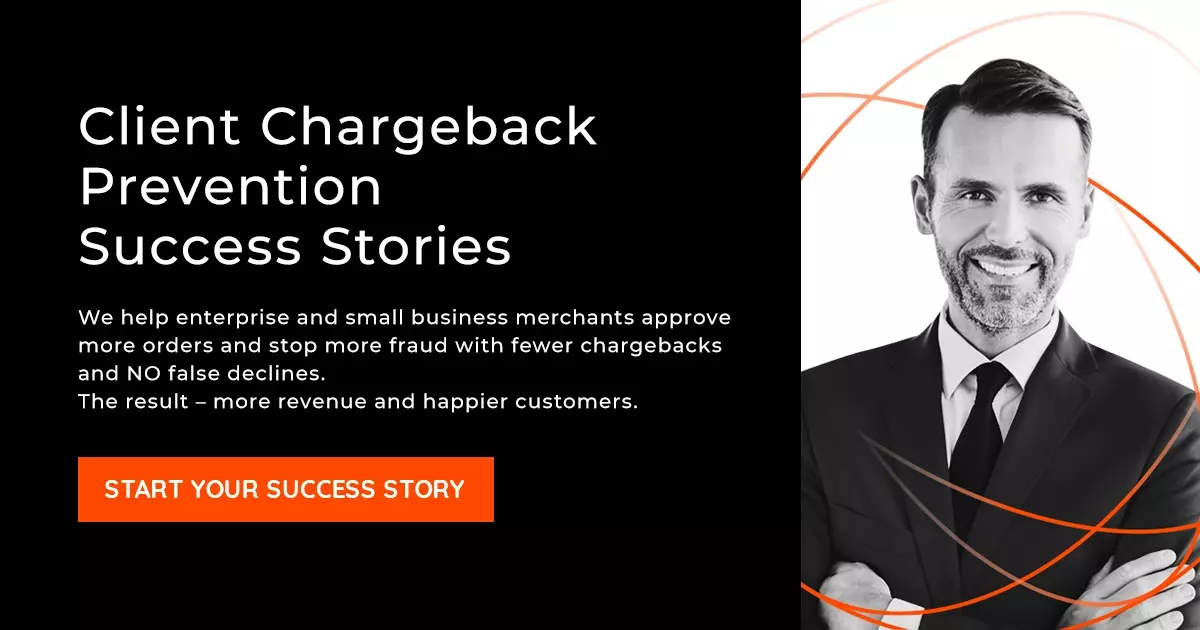Augment or Outsource: What Every Ecommerce Fraud Protection Manager Should Know
Ecommerce merchants – especially enterprise retailers – often have an all or nothing assumption about fraud protection, thinking their choices are limited to outsourcing or handling it in-house.
This approach, however, just isn’t realistic anymore, considering how many new challenges have arisen in the post-pandemic ecommerce era. Instead, ecommerce retailers should consider a third option: augmenting their fraud prevention.
Consider this: A typical fraud prevention team within a large ecommerce retailer may have anywhere from one or two people to a few dozen employees.
That may seem like enough staff, but the online world has changed. And so has the workforce. Data breaches have become commonplace, workers are leaving their jobs in record numbers, and the staff who remain are being forced to handle responsibilities outside of their skill set.
By the same token, many fraud prevention managers have a near-allergic reaction when they hear “outsource.” After investing time and energy training a team of fraud analysts and clarifying how their fraud filters should be set, the last thing they want to hear is that they should throw the baby out with the bathwater and hand the job over to someone else.
This is what makes augmenting the fraud team such a win-win solution.
“Clients automatically assume that outsourcing means replacing their staff. What we actually do is augment their staff so they don’t have to do some of the tedious things such as making phone calls to validate orders. This model increases an internal teams knowledge, toolset, and capacity. We free teams up to do the other responsibilities that help drive their business.”
When in-house teams don’t have this type of extra support, they face significant challenges that put their fraud prevention efforts at risk.
Let’s take a deeper dive into how this plays out.
In-House Fraud Prevention Teams Can Struggle to Stay Up to Date
Fraudsters can attack an ecommerce store from anywhere in the world – which means the store’s fraud prevention team needs to stay well-versed on international fraud trends and tactics.
That doesn’t always happen. Instead, many in-house fraud teams remain somewhat siloed, focusing solely on the fraud that knocks on their proverbial door. And if they don’t receive regular training or intelligence on the international fraud landscape, those silos remain. In-house fraud teams are also siloed by only being able to see their own customers data, versus augmenting with a vendor solution that has access to a broad network of data, such as ClearSale.
This lack of breadth in most in-house fraud prevention training forces fraud analysts to stick with “stereotypical” data points, such as billing and shipping mismatch, CVV validation and email addresses. But those data elements only offer a fraction of the fraud picture. Without a better understanding of current fraud trends and tactics, the risk of false declines increases.
False Declines Can Do More Damage Than Fraud
A false decline happens when a valid customer transaction is mistaken for fraud and declined. In our most recent consumer study that looked at ecommerce behaviors and attitudes, we found the impact of false declines on an ecommerce retailer’s business is alarming: A whopping 40% of consumers won’t shop with a retailer again after being incorrectly declined, and 34% will most likely post something negative on social media about it.
Less experienced consumers will likely try again because they tend to assume there was some sort of mistake. And up to 60% of consumers may reach out to customer service when a false decline happens, but 21% won’t. That’s a lot of business to turn away.
And when we look at younger generations separately, those numbers are worse – the percentage of loyal customers lost to a false decline increases to 45%. This is mostly because younger shoppers know of multiple other stores where they can find the same product, they know how ecommerce is supposed to work, and they expect to be approved.
In-House Fraud Prevention Teams May Have a Narrow View of Ecommerce
When in-house fraud prevention teams analyze transactions, they look at their own data and compare it to more of their own data. Most often, they don’t expand the view to include their industry, their region, their country or their continent.
Why? Because they don’t have access to that kind of data.
Without that big picture view, in-house fraud prevention teams are flying blind to some degree. Because they can’t cross-reference transaction data outside of their own customer base, they risk missing out on important fraud patterns.
Worldwide Fraud Intelligence Is Essential in Today’s Ecommerce Climate
The pandemic expanded every online merchant’s potential reach and has significantly increased cross-border ecommerce. Not only are new international customers shopping across borders, fraudsters from around the world (who likely have a rich history of fraud with other online merchants) are also expanding their reach.
When fraud prevention teams have no insight or intelligence about that history, they either fall into the false decline trap and end up with unhappy customers or low approval rates, or they risk approving fraudulent transactions.
This is especially concerning when ecommerce retailers do business in countries like Mexico and Colombia, where online fraud is rampant and prevention is difficult to enforce. Even before the pandemic, 35% of Mexican online shoppers were victims of fraud and 60% felt that fraud was increasing.
Banking institutions in Mexico don’t have the same checks and balances found in other countries, so consumers and retailers are somewhat on their own to prevent themselves from becoming victims of fraud.
“It takes time to understand the fraud trends in Mexico because those fraudsters are very effective and sophisticated. That’s why it’s important to have visibility into the patterns of fraudsters across the globe. We can detect fraud more easily and accurately.”
As if the risks associated with data weren’t enough, in-house teams are subject to the same staffing woes befalling every company these days.
In-House Fraud Prevention Teams Are Often Overworked
Employee retention challenges are everywhere. Workers are quitting their jobs at will, taking vacation times when it’s convenient for them, and using sick time more than ever. All these factors place a heavier workload on in-house teams.
The timing couldn’t be worse.
The pandemic caused a huge surge in online shopping, along with an equivalent surge in fraud attempts. Keeping up with the volume and complexity of these attacks has driven many in-house teams to the point of exhaustion – at a time when companies can’t afford to lose even one more staffer.
Ecommerce retailers can find themselves overwhelmed quickly. The key is to find a way to bridge the gaps in your fraud prevention team.
Ecommerce Retailers Benefit From Augmenting Fraud Prevention
There’s no doubt about it – only the most robust in-house fraud teams will easily manage the increasing volume and sophistication of today’s fraud attacks.
But what about everybody else?
That’s where the win-win approach of augmenting an in-house fraud prevention team comes into play: Ecommerce businesses retain their in-house fraud teams but lean on a fraud prevention partner to help them shore up, scale or round out their numbers – and their skillsets. Ecommerce retailers need a fraud prevention partner that can complement their team and processes with a customized solution.
Take ClearSale client, ASUS, for example.
Fraud prevention was the bane of the company’s existence, mostly because their team was spending too much time manually reviewing every order. ClearSale implemented a process that leveraged global fraud intelligence with selective manual reviews, resulting in a 65% decrease in false declines, a 17% increase in the average size of approved orders, and a one-day disposition on almost every order.
“When you bring in an experienced fraud prevention partner to strengthen your fraud protection team, not only does it free up internal resources to be more strategically allocated, it gives internal fraud teams a real intelligence boost. The partner will have a wealth of data and analytics into global fraud patterns and trends, giving your team a much more complete fraud picture and your company much better approval rates.”
ClearSale Collaborates with Online Retailers to Fight Fraud
Whether it’s to add staff during peak seasons, handle flagged transactions, or provide more comprehensive fraud prevention services, ClearSale brings a massive global network and dataset that can instantly distinguish between a valid customer and a fraudster. We analyze a range of data points and conduct behavioral biometrics to offer an extremely high degree of accuracy.
ClearSale also has over 1,500+ highly trained analysts who can identify the validity of a high-risk order. We can also conduct a full analysis of any client’s database and industry to give them visibility into fraud trends as well as consumer behaviors and attitudes.
If you are looking for a partner to augment your fraud prevention team, contact us and one of our analysts will work with you to create a solution specific for your company’s unique needs.
 Rick Sunzeri
Rick Sunzeri




